If you want to know about the piping system for soil and waste drainage or residential space planning or ergonomic kitchen design, please click the link.
Introduction
Welcome to the world of skyscrapers, where buildings reach for the clouds and architects compete for the highest structure. Skyscrapers have become an iconic symbol of modern architecture, with their towering heights and intricate designs capturing the imagination of people around the world. But have you ever wondered how these marvels of engineering and design came to be? Join us as we take a journey through the history of skyscrapers and discover how they’ve evolved over the years.
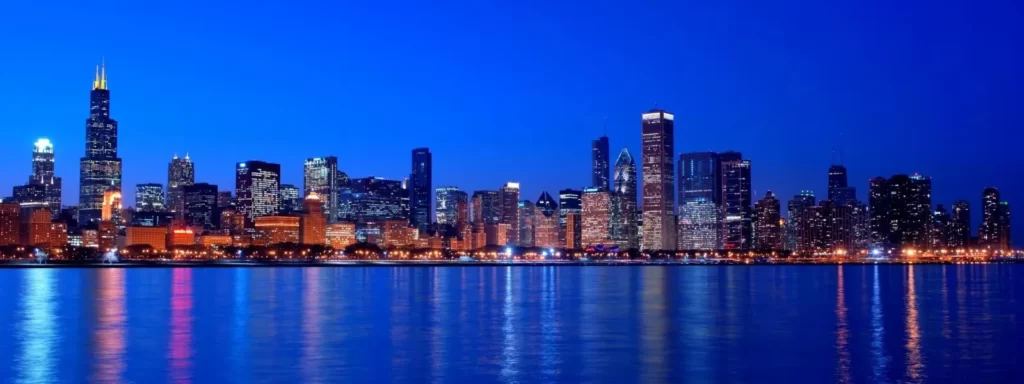
It all started in the late 19th century, when cities were growing rapidly and land was becoming scarce. Architects and engineers began to explore new ways of building up, instead of out, and the era of the skyscraper was born. The first skyscraper was the Home Insurance Building in Chicago, completed in 1885, which stood at a towering 10 stories tall. This may not seem like much by today’s standards, but at the time it was a revolutionary feat of engineering.
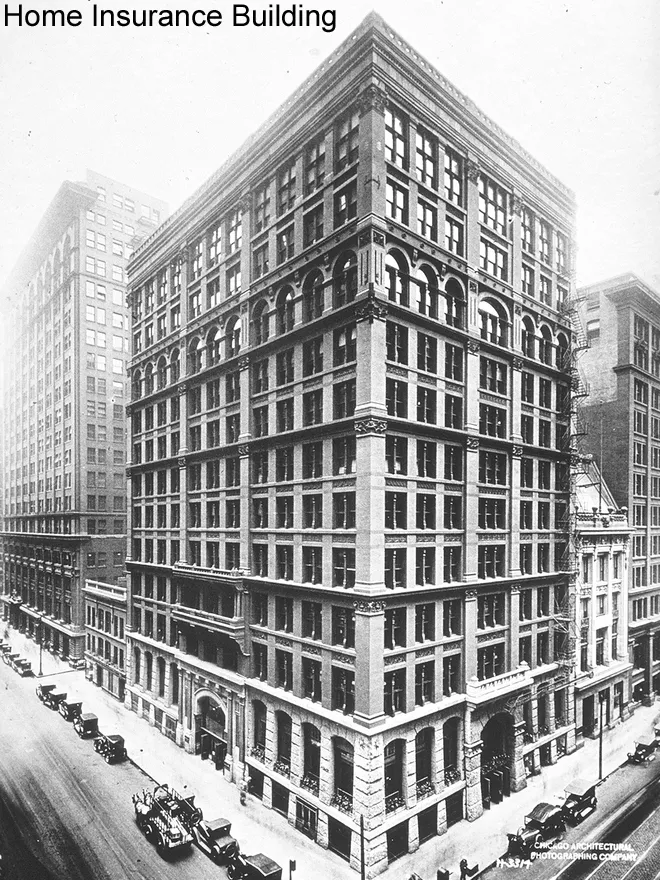
As technology advanced, so too did the skyscraper. With the development of steel frame construction, elevators, and other innovations, architects were able to build taller and taller buildings. The Empire State Building, completed in 1931, stood as the world’s tallest building for over 40 years, until the completion of the Willis Tower (formerly Sears Tower) in 1973. Since then, skyscrapers have continued to evolve, with designers and engineers pushing the boundaries of what is possible and creating some of the most iconic buildings in the world.
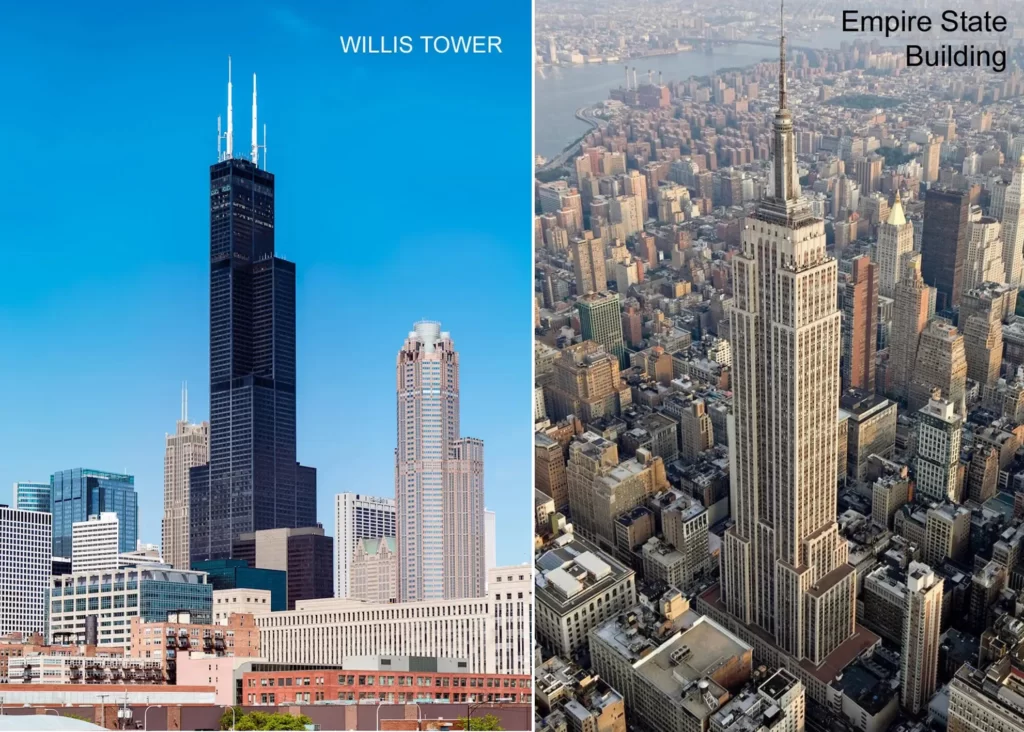
So, whether you’re a fan of modern architecture, engineering marvels, or just really tall buildings, join us on this journey through the evolution of skyscrapers. Who knows, you might even learn something new – or at the very least, you’ll have some interesting trivia to impress your friends at your next dinner party.
1) Early Skyscrapers
When we think of skyscrapers, we often think of gleaming glass and steel towers that seem to stretch endlessly into the sky. But the early skyscrapers of the late 19th and early 20th centuries were a far cry from the sleek, modern buildings of today. In fact, many of them were quite ornate and even a bit whimsical in their design.
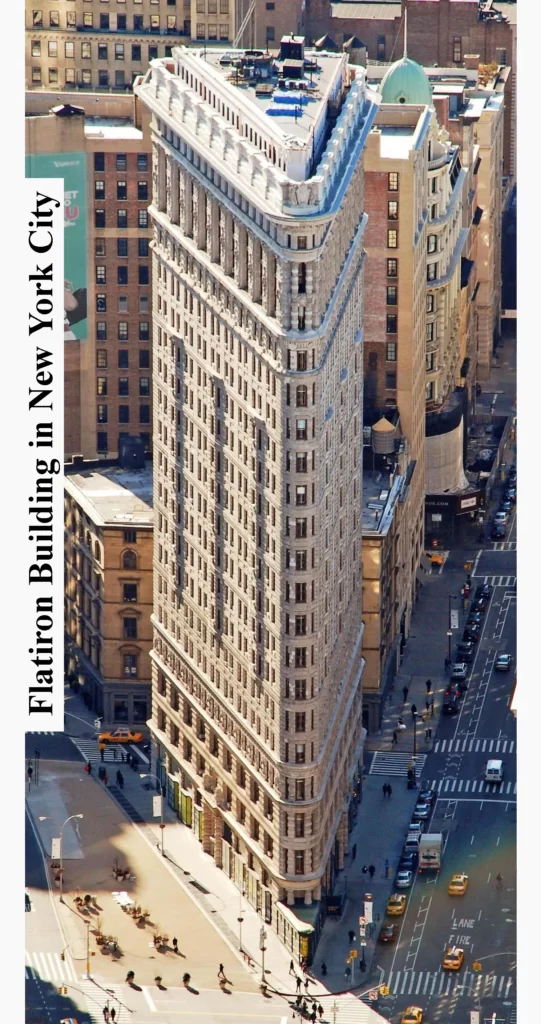
One of the most iconic early skyscrapers is the Flatiron Building in New York City. Completed in 1902, it stands at 22 stories tall and is named for its unique triangular shape. Designed by architect Daniel Burnham, the building was a marvel of engineering and design, featuring a steel frame and a unique Beaux-Arts facade. Today, the Flatiron Building remains a beloved landmark and a symbol of the city’s rich architectural history.

Another early skyscraper that still stands today is the Chicago Board of Trade Building, completed in 1930. Designed by Holabird & Root, the building is a prime example of the Art Deco style, with a striking design that features a central tower flanked by two smaller wings. The building is famous for its impressive statue of Ceres, the Roman goddess of agriculture, which sits atop the central tower.
Of course, not all early skyscrapers were quite so impressive. Many were designed with a more utilitarian purpose in mind, and lacked the elaborate ornamentation and attention to detail of their more famous counterparts. But regardless of their size or style, these early skyscrapers were a testament to the ingenuity and innovation of their creators, who pushed the boundaries of what was possible and laid the groundwork for the incredible skyscrapers of today.
So, the next time you find yourself in a bustling city with skyscrapers all around you, take a moment to appreciate the early buildings that paved the way for the towering structures we know and love today. Who knows – you might just discover a new appreciation for the quirky and unique early skyscrapers that still stand tall and proud after all these years.
2) The Modern Skyscraper
As we move into the 21st century, skyscrapers have continued to evolve and push the boundaries of what is possible in architecture and engineering. The modern skyscraper is a testament to the incredible creativity and innovation of the designers and engineers who have worked to create some of the most iconic and awe-inspiring buildings in the world.
One of the defining characteristics of the modern skyscraper is its use of advanced materials and construction techniques. Whereas early skyscrapers were built primarily using steel and concrete, today’s buildings often feature advanced composites and other materials that allow for even greater heights and unique shapes. For example, the Burj Khalifa in Dubai, currently the tallest building in the world, is made primarily of reinforced concrete, a material that allows for a slender profile and increased resistance to wind and seismic forces.
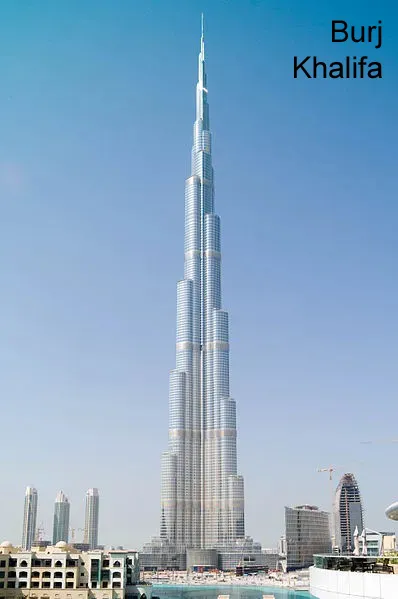
Another hallmark of the modern skyscraper is its emphasis on sustainability and energy efficiency. With the growing focus on reducing our carbon footprint and creating more sustainable buildings, many modern skyscrapers incorporate features such as green roofs, solar panels, and high-performance insulation to reduce energy consumption and environmental impact. For example, the Pearl River Tower in Guangzhou, China, is designed to be one of the most energy-efficient buildings in the world, with a unique shape that allows for natural ventilation and a double-skin facade that helps to reduce heating and cooling needs.

Of course, one of the most exciting aspects of the modern skyscraper is its bold and innovative designs. From the twisting form of the Shanghai Tower to the honeycomb-like exterior of the O-14 Tower in Dubai, modern skyscrapers are pushing the boundaries of what is possible in terms of shape and form. These buildings not only capture the imagination of architects and engineers, but also serve as beloved landmarks and symbols of their respective cities and countries.

So, whether you’re a fan of sleek and minimalist designs or quirky and offbeat shapes, there’s no denying that the modern skyscraper has something for everyone. With its emphasis on innovation, sustainability, and jaw-dropping designs, the modern skyscraper continues to be a beacon of human ingenuity and creativity, inspiring and delighting people around the world.
3) Contemporary Skyscrapers
As we move deeper into the 21st century, the world of architecture is evolving at an ever-accelerating pace. The modern skyscraper has continued to evolve, with a new wave of contemporary buildings that showcase the latest in design, technology, and engineering.
One of the most prominent trends in contemporary skyscraper design is the integration of nature and greenery into building facades and interiors. The Bosco Verticale in Milan, for example, is a pair of residential towers that feature over 900 trees and thousands of plants, creating a lush, green oasis in the heart of the city. Other contemporary buildings, like the Garden Tower in Singapore, incorporate vertical gardens and green roofs to provide a connection to nature and improve air quality.
Another trend in contemporary skyscraper design is the use of advanced technology to create truly iconic and awe-inspiring buildings. The Lotte World Tower in Seoul, for example, features a sleek, tapering form that was created using advanced computer modeling and simulation techniques, allowing the architects to optimize the building’s shape for maximum efficiency and aesthetic impact. Other contemporary buildings, like the Ping An Finance Center in Shenzhen, incorporate advanced energy-saving and environmental control systems to create a comfortable and sustainable indoor environment for occupants.

Of course, no discussion of contemporary skyscrapers would be complete without mentioning the incredible array of shapes and forms that these buildings can take. From the twisting, organic form of the Infinity Tower in Dubai to the futuristic, space-age design of the CCTV Headquarters in Beijing, contemporary skyscrapers are constantly pushing the boundaries of what is possible in terms of architectural design.
Whether you’re a fan of nature-inspired buildings, cutting-edge technology, or bold and innovative designs, there’s no denying that the world of contemporary skyscrapers has something for everyone. These buildings are not just symbols of human ingenuity and creativity, but also serve as beloved landmarks and cultural touchstones that capture the imagination of people around the world.
4) The Future of Skyscrapers
As we look to the future, the world of skyscraper design is poised to undergo an even more dramatic transformation. With advances in materials, technology, and construction techniques, the sky truly is the limit when it comes to what we can achieve in architecture and engineering.
One of the most exciting developments in the future of skyscrapers is the potential for taller, slimmer, and more graceful designs. Advances in materials like ultra-high-performance concrete and new steel alloys are allowing for buildings that are not only taller but also more slender and elegant, creating a new generation of super-tall, super-thin skyscrapers. In addition, advances in nanotechnology are making it possible to develop even stronger and lighter materials, which could lead to even more daring and ambitious designs.
Another trend in the future of skyscrapers is the incorporation of new and innovative features that are designed to enhance the well-being of occupants and the environment. This includes things like biophilic design, which incorporates natural elements like water, plants, and sunlight into building interiors, as well as technologies like “smart” building systems that can help to reduce energy consumption and improve air quality. Additionally, new designs are being developed to create more flexible and adaptable spaces that can be easily reconfigured as the needs of occupants change over time.
One of the most exciting possibilities for the future of skyscrapers is the potential for buildings to become not just self-sufficient, but also energy-positive. With advances in solar power, wind turbines, and other renewable energy sources, it may soon be possible for skyscrapers to generate more energy than they consume, effectively turning them into mini power plants that can help to power the surrounding city.
Overall, the future of skyscrapers is an exciting and rapidly evolving field, with new possibilities and innovations emerging every day. Whether it’s new materials, new technologies, or new designs, the sky truly is the limit when it comes to what we can achieve in the world of architecture and engineering.
5) Conclusion
In conclusion, the evolution of skyscrapers is a fascinating and ongoing story that has captured the imagination of architects, engineers, and the public for well over a century. From the early days of steel and concrete to the latest advances in nanotechnology and renewable energy, the world of skyscraper design has always been on the cutting edge of innovation and creativity.
As we look to the future of skyscrapers, it’s clear that the potential for new and exciting developments is virtually limitless. Whether it’s taller, slimmer, and more graceful buildings, new and innovative features that enhance the well-being of occupants and the environment, or even buildings that generate more energy than they consume, the possibilities for the future of skyscrapers are truly awe-inspiring.
But at the same time, it’s important to remember that the evolution of skyscrapers is not just about technological innovation or striking design. These buildings are also a reflection of our changing values, priorities, and aspirations as a society. From the early days of the skyscraper, when they represented a new kind of economic and social power, to the contemporary era, where they represent a new kind of environmental and social responsibility, these buildings are always more than just steel and glass.
In the end, the evolution of skyscrapers is a story about the human desire to reach ever-higher, to push the boundaries of what is possible, and to create a built environment that reflects our highest ideals and aspirations. As long as this desire burns within us, the future of skyscrapers will continue to be one of the most exciting and inspiring stories in the world of architecture and engineering.